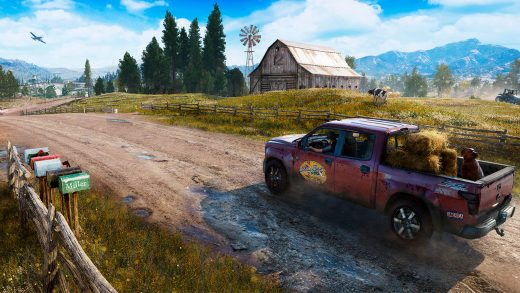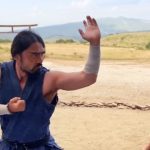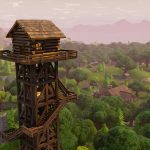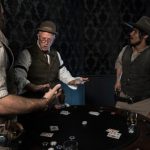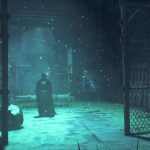Far Cry 5 – Encounter the Faith, Freedom, and Firearms of Hope County February 27
Far Cry 5 – Encounter the Faith, Freedom, and Firearms of Hope County February 27
Far Cry 5 was sparked by a sense of childhood dread. Long before the developers visited Montana or even decided that they wanted to bring Far Cry to the US, the seeds of the game were planted by the existential fear of a childhood in the early ’80s, when the waning days of the Cold War had the world holding its breath for something immense and terrible to happen.
“I remember sort of this crushing weight. This feeling like the titans of the US and the Soviet Union could basically erupt, and that something catastrophic would happen,” says Executive Producer and Creative Director Dan Hay. “I remember growing up under that, and feeling the weight of it and being scared all the time. I remember watching movies like The Terminator or War Games, and it was sort of out there in the ether that people were feeling like we were on the edge of something.”
The feeling dissipated with the fall of the Berlin Wall, Hay says, but wormed back to the surface in recent years, starting with the subprime mortgage crisis of 2008. “I think about what people were feeling at those moments,” Hay says. “Where’s the government? Where are the people protecting our assets? Where are the people who are watching what’s going on? Where are the people holding the reins of this and protecting us?
“And I started to get that feeling back from when I was a kid, like maybe everything wasn’t perfectly safe,” Hay adds. “Maybe everything wasn’t properly managed.”
That oppressive uncertainty is something Hay wants to harness in Far Cry 5, which sees you alone and untethered in a hostile countryside controlled by The Project at Eden’s Gate. Led by Joseph “The Father” Seed, the cult preys on the same apocalyptic fear and uncertainty Hay first felt as a child, preaching that a societal collapse is imminent, and that Eden’s Gate holds the key to salvation. They’re driven by a fanatical belief that a voice spoke to Joseph and commanded him to save as many souls as possible, whether they like it or not. Now they’ve capped off a long campaign of intimidation, recruitment, and aggressive land acquisition with an armed takeover of Hope County, Montana, and you’re a thorn in the cult’s side. No help is coming from outside, you don’t know any of the locals, and it’s down to you to stop the cult from harvesting the souls of Hope County and beyond.
“We want to make sure that the game builds a believable pressure,” says Hay. “So we built a beautiful world, and we want you to visit it. We want you to be able to experience all the gameplay, the anecdote factory, everything you know from Far Cry. But we want to put a believable pressure on that.”
Big Sky Country
“About three years ago, we started to talk about some of the things that are in the game right now – cults, the idea of going to Montana, the idea of going to a frontier in the States, and bringing you to a place that you know already,” says Hay, “and the concept that the thing in your backyard could be even more exotic than going a thousand miles away.”
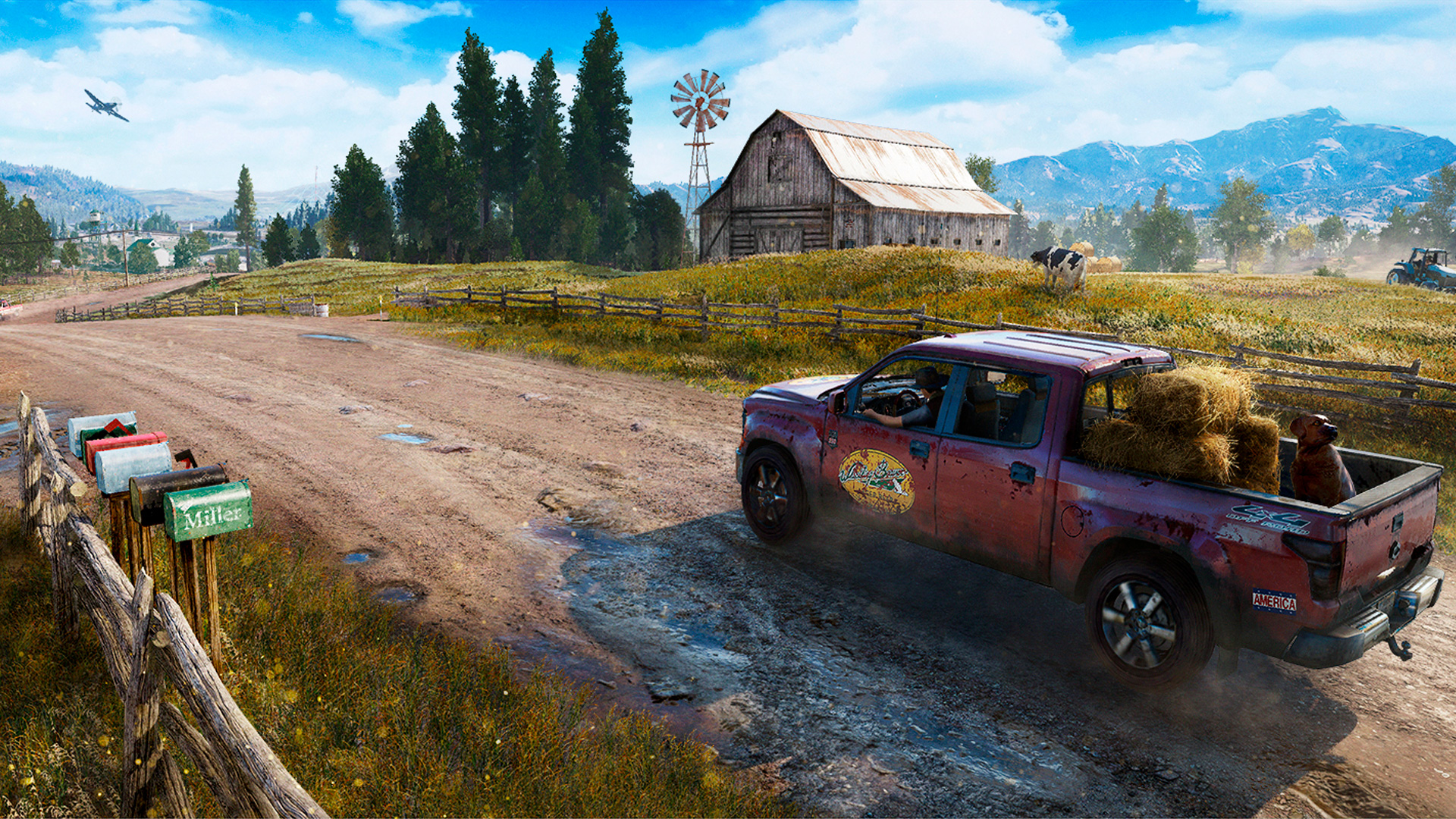
Early in Far Cry 5’s development, Hay and his team spent about 14 days visiting Montana, where they hung out with locals got a firsthand look at the state’s countryside, discovering a beautiful landscape with tons of environmental diversity and opportunities for outdoor fun.
“Far Cry is about two things,” says Hay. “It’s definitely about chaos, and there’s a lot of that in this. But it’s also about building a beautiful world. We went to Montana and we fell in love with it. It’s stunning. Think about all the different things you can do, the different creatures that are there, all the different biomes. So we built our world, and this is our version of Montana.”
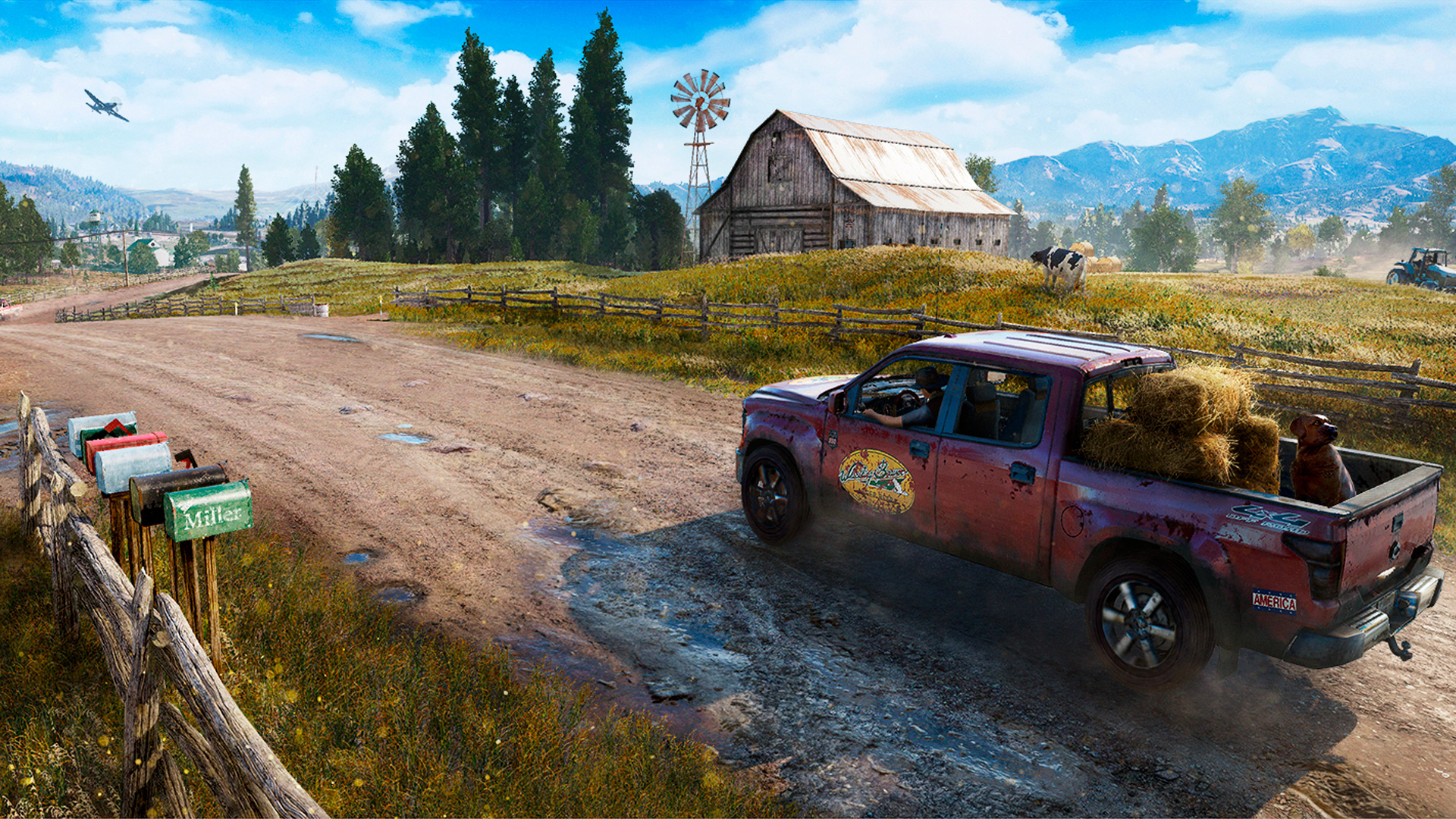
The team also met people who seemed to pride themselves on their self-reliance (as well as a noticeable fringe element that helped inspire Eden’s Gate).
“We met a lot of people who didn’t want to be messed with,” says Hay. “They want to be left alone. And there was this feeling of being able to take care of themselves. And it created this sense of a frontier, and a remoteness, that really resonated with us. But what happens when somebody else shows up and says, ‘yeah, I agree with you, don’t trust the government, we can do it ourselves, and I will provide’?” All of a sudden you create this petri dish, this magnet for crazy, which is where Eden’s Gate goes.”
In the Name of The Father
“Games are maturing, and we’re getting closer and closer to films and television in terms of the stories we can tell,” Hay says. “And I think it means we can start to tackle situations and characters that are a little more complex. And so when we look at The Father, this guy who believes that the end of times is coming, and has built his own religion, it means that we can tackle that. Even though it’s a tough subject, it works in the game, and we feel like we can own it.”
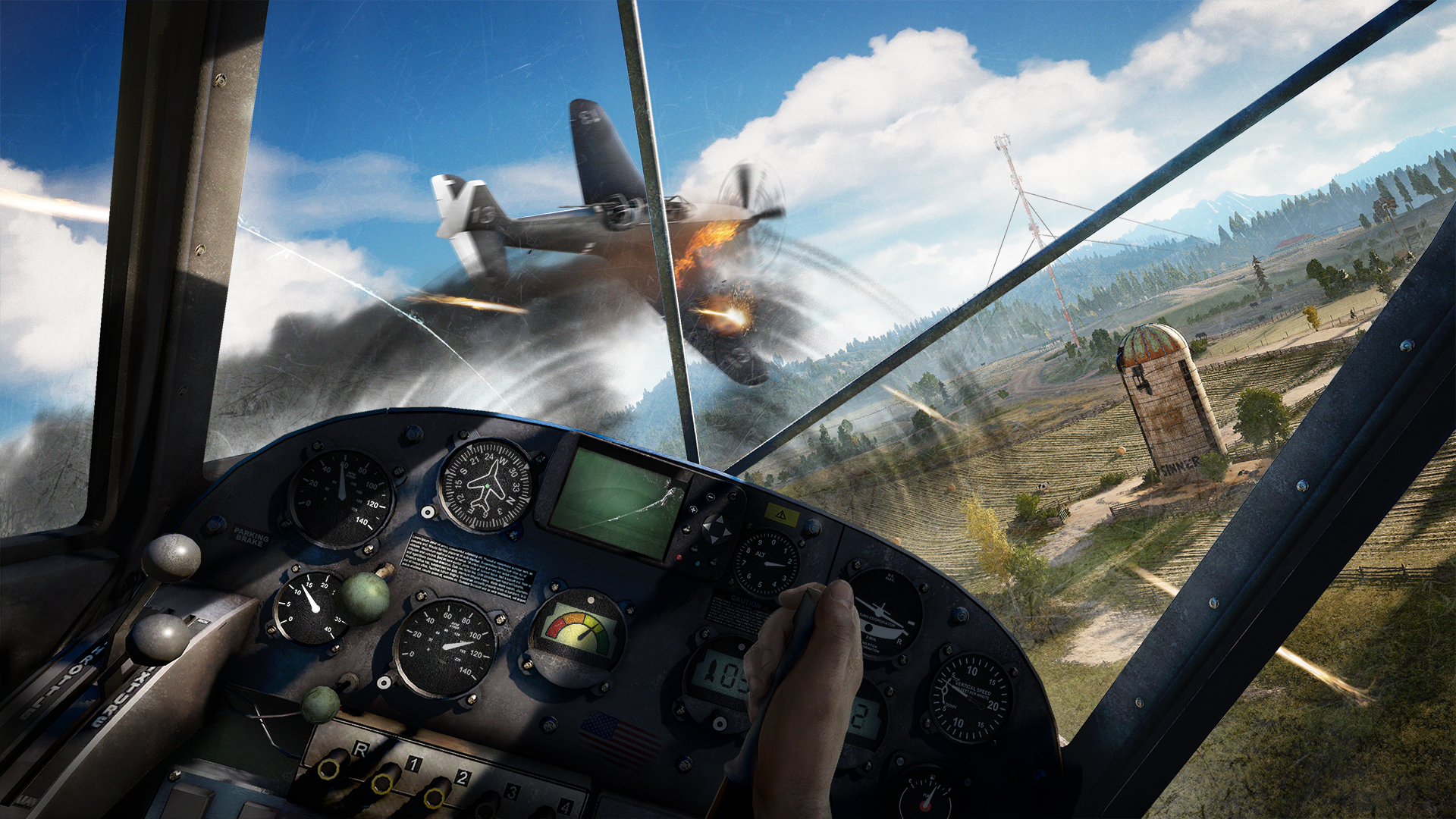
In creating Eden’s Gate, Hay and his team met with experts on cults to learn, among other things, how they’re organized. And what they found is that modern cults aren’t necessarily structured around a single, charismatic leader, but around a core group of people with specific jobs and mandates. In Eden’s Gate’s case, those people are Joseph’s family.
“Joseph the leader, everyone follows,” says Hay. “With him is his brother, Jacob, the oldest, who had 20 years in the Army, and now has a very unique set of skills. He also has John, the youngest, who’s almost the face of the organization.”
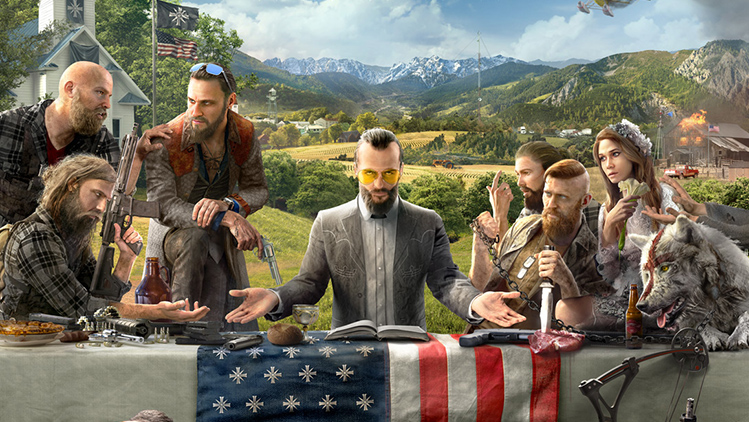
John, Hay explains, is a lawyer in charge of maintaining the cult’s public side. John also spearheads the cult’s aggressive attempts to buy up land throughout Hope County, displacing residents in the name of claiming cult territory.
“What we learned from cult experts is that a cult will have somebody like John who shows up and buys some shitty land just on the outskirts of town, and then puts 1,500 people on it,” says Hay. “And the moment that happens, all of the land around them devalues, and they spread like a cancer until they have control over the municipality. That’s John.”
The cult’s fourth leader is Faith, described by Hay as “the half-sister, the baby sister.” Faith’s job is to keep the cultists focused and pacified once they’re in the fold.
“You need somebody who’s making sure that everyone’s rowing in the same direction, and that’s Faith,” says Hay. “That’s the family that we’ve built.
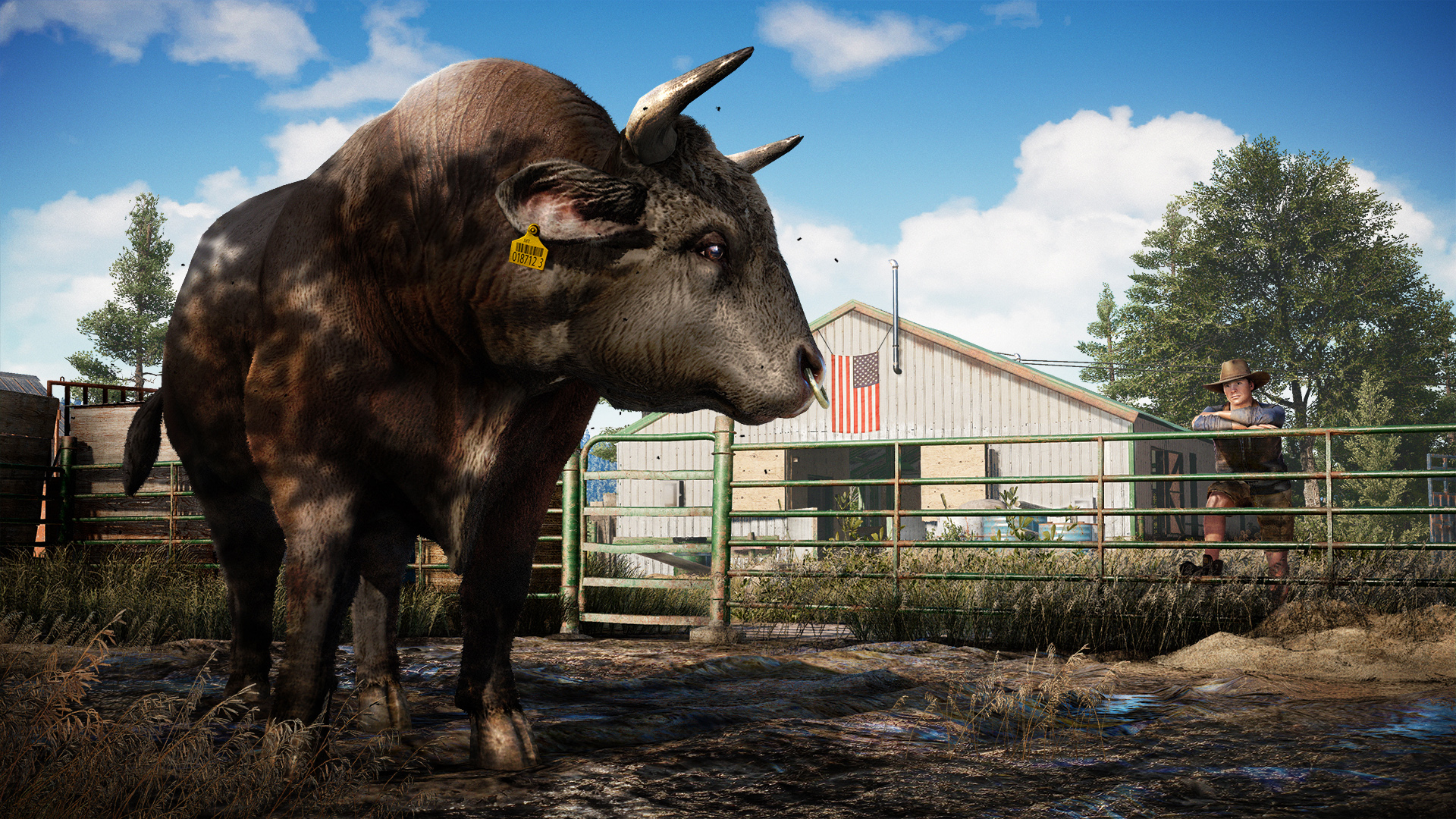
“We look back at some of the characters that we’ve created before, and we know we’ve had those key moments where you sit down with them, and you look at them eye to eye,” says Hay. “But we kind of did it with one character at a time, and each game was a face-off. This time, we thought it’d be really interesting if we created a cast of characters [like that]. They each have their own personalities, and each even have their own agenda.”
However, Hay adds, that same approach to character-building also applies to the people you’ll meet in the open world, who are just as important to Far Cry 5 as its landscape and villains.
Building The Resistance
A key part of Far Cry 5 is its resistance fighters, who will follow you into battle with unique personalities, skills, and backstories. Hope County may be occupied by cultists, but it’s full of people who are less than thrilled about that, and they’ll take up arms against Eden’s Gate if you can convince them to join you. But first it’s on you to find and meet them.
“You go out into the world and you meet people for the first time, you don’t know them, maybe they don’t trust you,” says Hay. “But if you can strike up a deal with them, if you can have a conversation with them and make them part of what it is you’re building, they can join your resistance.”
Three of these characters have been revealed so far. First is Pastor Jerome Jeffries, Hope County’s former parish priest, who lost his church to the cultists before being severely beaten and left in the woods to die. He pulled through, however, and after recovering from his ordeal, he’s now dedicated to defending Hope County’s civilians from Eden’s Gate’s predations. Then there’s Mary May Fairgrave, a second-generation saloon owner whose family business was bought out from under her by Eden’s Gate, and who intends to retaliate with a crate of Molotovs. Finally, there’s Nick Rye, a cropduster pilot who disappointed his father by not enlisting in the Air Force, but who’s now welding guns to his plane to defend his family.
“When we see those characters come to life, when we see that they’re not just AI waiting around to give you a mission – they have real personalities, they have opinions about stuff – the world feels real,” Hay says. “We want it to feel real, we want it to feel grounded, we want it to feel like you’re having a real experience. When I think of a Far Cry story, I think about sitting in a bar, having a scotch, and somebody comes up behind me and starts to talk about an urban legend that happened to them. And they’re telling the story of survival in a frontier, and it’s twisted, it’s unique.
“That’s what makes a Far Cry story, and if I can imagine myself at that bar, and I can hear that story and go ‘we can build that, we can make that,’ that’s a Far Cry,” says Hay. “And in this case, I think that bar is actually in Montana.”
Far Cry 5 will launch on Xbox One, PS4, and PC on February 27, and you can see more when Ubisoft’s E3 press conference kicks off at 1:00PM PDT on June 12. And for more updates, keep your eye on UbiBlog.
The post Far Cry 5 – Encounter the Faith, Freedom, and Firearms of Hope County February 27 appeared first on UbiBlog – Ubisoft®.
(73)

